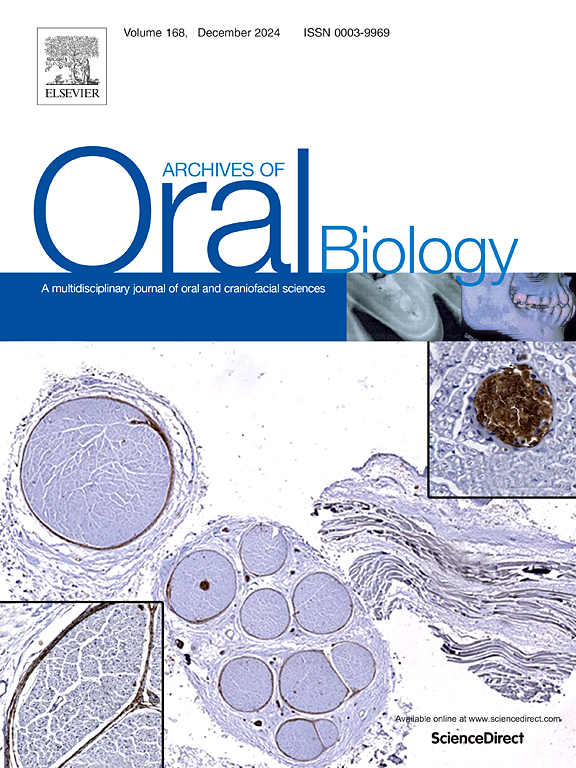Salivary alpha amylase as a diagnostic biomarker for dental caries – A systematic review and meta analysis
IF 2.2
4区 医学
Q2 DENTISTRY, ORAL SURGERY & MEDICINE
引用次数: 0
Abstract
Objective
This systematic review and meta-analysis aimed to assess the association between the dental caries and the level of salivary alpha amylase activity among caries active and caries free individuals.
Design
This review followed the PRISMA guidelines and registered in PROSPERO (CRD42024518973). A comprehensive search across various research databases until January 31, 2024 yielded 1031 articles, where multiple screening ultimately narrowed it to 13 articles. Appropriate cross sectional studies comparing caries active (CA), caries free (CF) group and evaluating their level of salivary alpha amylase activity were included.
Results
The meta-analysis was performed on all 13 included studies utilizing a random effects model and two sub group analysis were performed where studies with salivary alpha amylase activity estimated using spectrophotometer and autoanalyzer were analyzed separately among caries active and caries free group. The pooled data reveals that the salivary alpha amylase activity was significantly higher (p = 0.005) in caries active group compared to caries free group with a standardized mean difference of 1.30.
Conclusion
This review indicated the differences in the salivary alpha amylase activity among caries active and caries free individuals which could aid in identifying individuals susceptible to dental caries thereby offering new insights for preventive dentistry by assessing their caries risk, enabling tailored preventive strategies.
唾液α淀粉酶作为诊断龋齿的生物标志物-系统回顾和荟萃分析
目的通过系统回顾和荟萃分析,探讨龋齿活跃人群和无龋齿人群中龋齿与唾液α淀粉酶活性水平的关系。本研究遵循PRISMA指南,并在PROSPERO注册(CRD42024518973)。到2024年1月31日,在各种研究数据库中进行全面搜索,得到1031篇文章,经过多次筛选,最终缩小到13篇。适当的横断面研究比较了龋齿活性组(CA)和无龋齿组(CF),并评估了它们的唾液α淀粉酶活性水平。结果采用随机效应模型对所有纳入的13项研究进行荟萃分析,并进行两个亚组分析,其中分别使用分光光度计和自动分析仪对龋活跃组和无龋组的唾液α淀粉酶活性进行分析。合并数据显示,龋活跃组唾液α淀粉酶活性显著高于无龋组(p = 0.005),标准化平均差为1.30。结论本综述揭示了龋活跃性和无龋性人群唾液α淀粉酶活性的差异,有助于识别龋易感人群,从而为预防牙科提供新的思路,评估其龋风险,制定针对性的预防策略。
本文章由计算机程序翻译,如有差异,请以英文原文为准。
求助全文
约1分钟内获得全文
求助全文
来源期刊

Archives of oral biology
医学-牙科与口腔外科
CiteScore
5.10
自引率
3.30%
发文量
177
审稿时长
26 days
期刊介绍:
Archives of Oral Biology is an international journal which aims to publish papers of the highest scientific quality in the oral and craniofacial sciences. The journal is particularly interested in research which advances knowledge in the mechanisms of craniofacial development and disease, including:
Cell and molecular biology
Molecular genetics
Immunology
Pathogenesis
Cellular microbiology
Embryology
Syndromology
Forensic dentistry
 求助内容:
求助内容: 应助结果提醒方式:
应助结果提醒方式:


